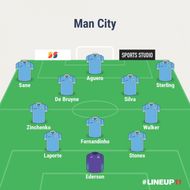Football has evolved tremendously over the last decade or so. Traditional formations like 4-4-2 that were dominating European football at the turn of the century have become outdated and irrelevant.
Pep Guardiola, in particular, has had a huge influence in recent years. His stint at Barcelona revolutionised the way we see possession football, bringing back the glorious concept of Total Football that Johan Cruyff had perfected at Ajax.
Guardiola has since taken up managerial roles at Bayern Munich and Manchester City. While his critics may argue that his job selections have shrewdly been at clubs at the top of the financial ladder, the ease with which he has guided Bayern and City to domestic dominance speaks a lot of his abilities as a tactician.
While the underlying template of his systems in Spain, Germany and England has been the same, Guardiola has also been proficient in adapting his teams to withstand the different challenges that these leagues bring. In order to explain the concept of inverted fullbacks, let us take a look at Manchester City's playing style.
City's fullback splurge
Guardiola particularly struggled in his first season in England. All of City's fullbacks at the time - Sagna, Clichy, Zabaleta - were well past their peaks and into their 30s. Eyebrows were raised when a combined £120 million was spent on Benjamin Mendy, Kyle Walker and Danilo in the next summer.
It had previously been unheard of for a club to spend such obscene amounts of money on fullbacks - a football position that has been taken for granted in football for a very long time. But Guardiola was just starting his tactical revolution in England.
In his second season in the Premier League, Pep started using inverted fullbacks. These players are essentially fullbacks or wingbacks on paper, but on the pitch, they are so much more.
City's fullbacks, primarily Walker and Mendy, started to take up more central positions when their team had the ball. This helped the Cityzens in ball retention, which is a huge facet of Guardiola's philosophy.
In turn, Raheem Sterling and Leroy Sane found themselves in one-on-one situations out wide in which they excel.
The Barcelona team of the late 2000s created a lot of passing triangles to move the ball around more quickly, and to give the player in possession several options.

When City's fullbacks congest the midfield, they create those triangles. Guardiola also sets up his team to provide several different vertical passing lanes, and his fullbacks play a huge role in that.
This hybrid midfield-fullback role that is so crucial to City's system also explains why they have found success in using highly technical midfielders like Fabian Delph and Oleksandr Zinchenko at left back. In spite of Benjamin Mendy's various injuries since he was signed from Monaco, Guardiola hasn't found it difficult to cope in his absence.
When the inverted fullbacks occasionally venture forward, their horizontal positioning means that they can exploit the half spaces between the opposition fullback and centre back. City often create these scenarios to put low crosses into the box that are a nightmare for defenders to deal with.
As is visible in the above Twitter thread, when Laporte receives the ball, Zinchenko takes up a very narrow position, dragging an opposition winger with him. This opens up a direct passing lane to the left winger, or gives the player in possession several short passing options as well.
The usage of inverted fullbacks also allows City to take the considerable risk of fielding two attack-minded midfielders like Kevin De Bruyne and David Silva in a 4-3-3 formation.
On paper, there may be an imbalance between attack and defence, but Walker and Mendy/Zinchenko give De Bruyne and Silva the freedom to venture further up the field and use their creativity. This season, Bernardo Silva has also thrived in the absence of De Bruyne.
This is also perhaps why City have struggled without Fernandinho. With fullbacks pushing into midfield, the wider spaces in defence are guarded by ball playing centre backs like Stones and Laporte, while Fernandinho drops in between them.
It's still a tactic that's fairly new and evolving every day, and it poses a lot of risks as well. Inverted fullbacks need to be highly technical and comfortable on the ball, and the entire team needs to be intimately familiar with the system.
Inverted wingers were very rare a couple of decades ago, but are now commonplace. Pep Guardiola may have well started a new trend in football.
